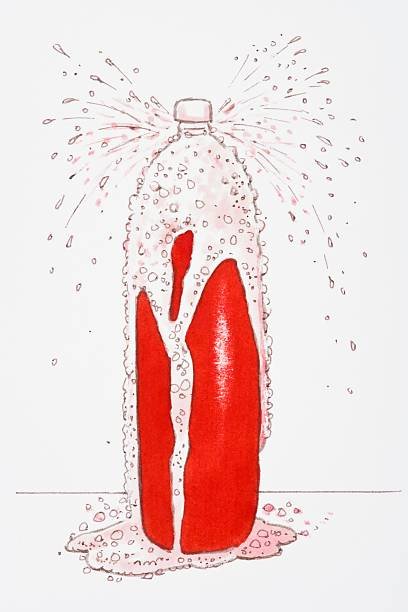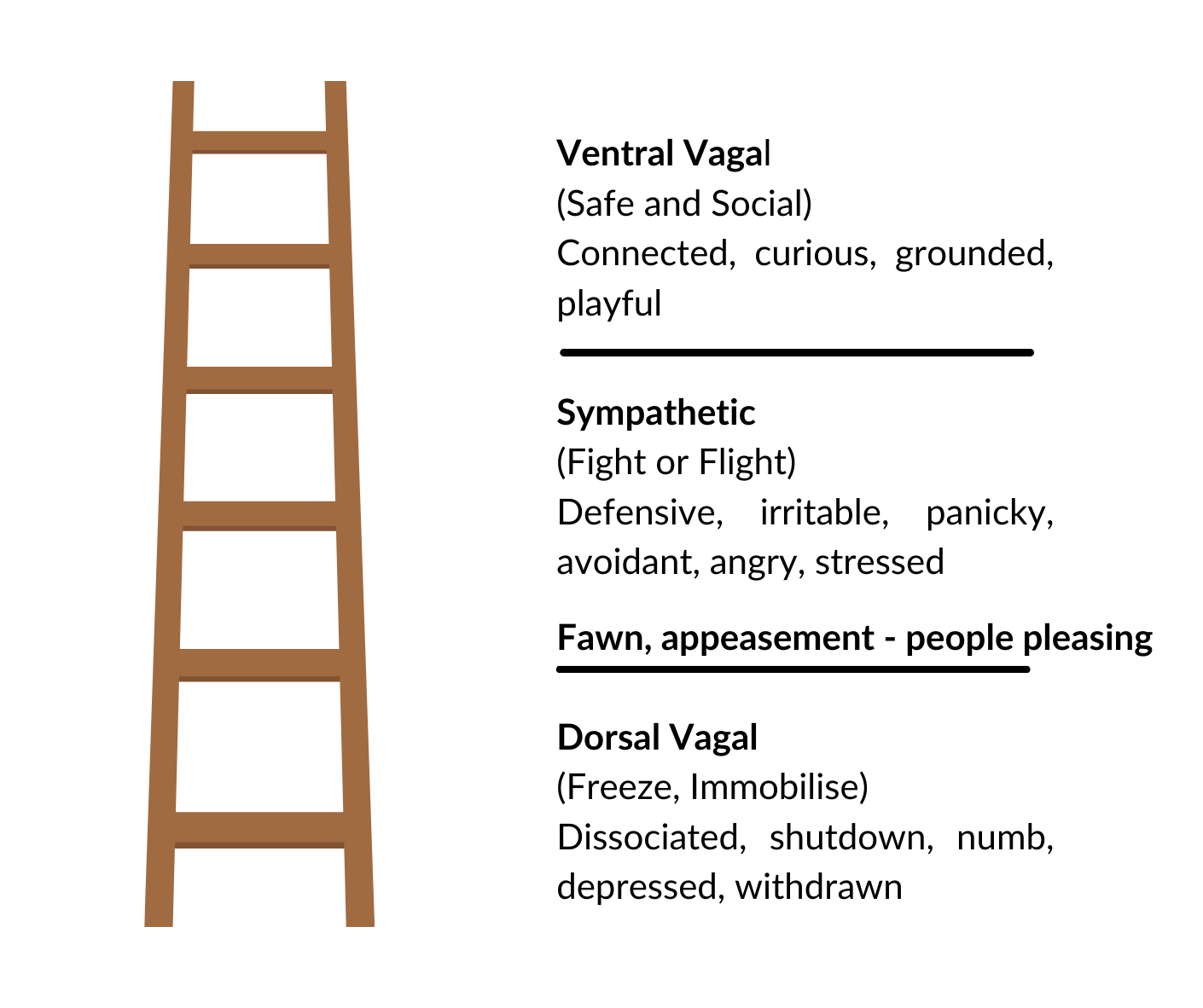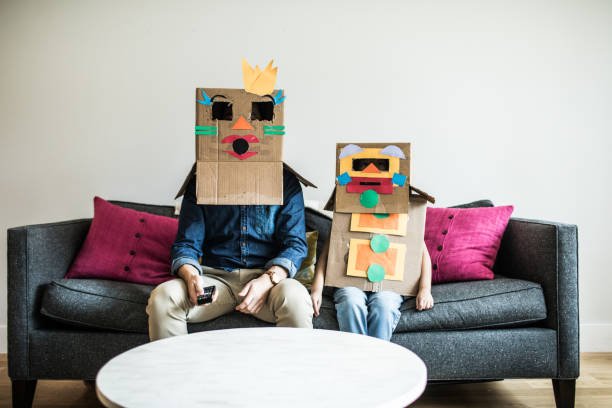You are waiting in your car for your child at the end of the school day. You see them coming down the pathway towards the school gate.
Your child is chatting with a friend, and everything seems fine.
As they approach the car, you can see their body language and facial expression shift.
They open the car door and get in next to you.
“How was your day?” you ask in a cheery tone, and just like that, your seemingly happy child explodes.
What just happened? They were fine a minute ago!
Firstly, if this scenario feels familiar to you, I want to reassure you, this is not just you. This is an all too common scenario that happens in many neurodivergent families.
Your child is seemingly ‘fine’ at school, with a friend, in a social situation or at a grandparent’s house, but when they are around you or at home, you experience a completely different kid.
What’s going on?
Masking and Autistic Kids
It is widely accepted that this ‘Jekyll and Hyde’ type of behaviour is due to your autistic child’s masking or camouflaging their sensory needs and autistic traits in social situations. However, just because your child suppresses their needs or traits, this doesn’t mean that they go away.
Under the surface, your child is experiencing extreme sensory discomfort.
The effort it takes for your child to keep their autistic traits under wraps is exhausting.
Due to the hyperconnectivity of your child’s autistic brain, their nervous system is fine-tuned to sense threats in their environment. Their neuroception (their sense of whether situations are safe or dangerous) is triggered – it feels like there is a tiger in the room.
This activates the survival part of your child’s brain.
The stress and distress build up in their nervous system over the day, like a shaken coke bottle ready to explode.

The presence of their ‘safe’ person, you, is like the lid being taken off the bottle.
The result is an explosion – a meltdown.
Is Autistic Masking A Conscious Decision?
Many people think masking/camouflaging is a conscious choice for the autistic child. However, in most cases, masking is unconscious.
Masking is an adaptation of the child’s nervous system due to the trauma of continuously being in situations threatening their sense of safety. And masking isn’t just a trauma response, it is trauma that accumulates in our soma over time, leading to PTSD and CPTSD.
A recent study found that a single mild stressor is enough to cause a traumatic memory for an autistic person. (Jessica Flagan, 2024)
Masking constantly triggers our fight or flight response because we are afraid of being found out as “other”. Social rejection and safety are the two main motivating factors for our unconscious subterfuge.
The extra cortisol that we are doused in daily damages us physically and mentally.
The Autlaw 2023

Understanding Masking And After-School Meltdowns From A Polyvagal Lens
So, if the masking is unintentional, what is really going on?
One way to make sense of why this unconscious masking is happening is through a polyvagal lens.
Polyvagal Theory, emphasizes the role the autonomic nervous system – especially the vagus nerve – plays in regulating our health and behaviour (Polyvagal Institute).
This theory, introduced by Dr Stephen Porges, is a way for us to understand our children’s nervous system, what happens during meltdowns, and also during times when they are seemingly ‘fine’.
I invite you to make up your own mind; however, this theory makes sense to me and could help us explain why even young children, who do not have the brain development necessary for intentional masking, would behave this way.
The Polyvagal Ladder
According to Stephen Porges’ polyvagal theory, our brain is connected to our body (and all our major organs) through our vagus nerve.
Our vagus nerve collects information from our body and tells us whether we are safe or in danger.
When we feel safe, we are in the Ventral Vagal state (safe and social). When we feel under threat, our body responds in one of three ways: Hyperarousal (sympathetic nervous system), Fight, Flight (meltdowns or elopement) or Immobilisation (parasympathetic dorsal vagal) Freeze (shutdowns).
Understanding The Fawn State Through A Polyvagal Lens
The Fawn response is a complex survival adaptation that can be hard to spot in our children (or even in ourselves if we are high-masking autistics).
Fawning behaviours involve facial and cranial movements we might associate with the ventral vagal state, with elements of hyperarousal and elements of immobilisation.
The fawn response involves both Fight/Flight and Freeze activation at the same time. Fight/Flight and Freeze activation at the same time. This is like pushing the gas pedal on a car while the emergency brake is engaged – and why fawning as a habitual long-term protective strategy causes major health problems.
Trauma Geek

When your child is in a Fawn state, they may appear to be ‘fine’ as this can mimic the safe and social-ventral vagal state. However, what is actually happening is that your child’s nervous system, sensing that Fight/Flight is not safe, moves down the polyvagal ladder towards Freeze.
In a school situation, while on the surface, the autistic child may appear to be the most compliant, ‘perfect’ student. However, this appeasement of others around them (masking) is actually a survival response.
Your child may also be in a Freeze state. However, this may not be picked up by those around them. Children who are quiet and don’t display behaviours that disrupt others around them are often overlooked in situations like a busy classroom. Shutdowns can be subtle, as it is difficult for us to know what our child’s internal experience is.
The Polyvagal Hierarchy
The polyvagal ladder is hierarchical and has to happen in a specific order.
This means that for our child to move from a state of Freeze (shutdown), or Fawn (appeasement) to a Ventral Vagal (safe) state, they need to first move through a Fight/Flight state. This state of hyperarousal is what you experience as the after-school Coke bottle explosion.
Masking and Burnout
One of the reasons why we need to know about these survival states and how they could affect our children is that masking is so damaging to the well-being of autistic people.
For many autistic individuals, it is hard to tell where the mask ends and the real autistic person begins.
Masking is one of the leading causes of autistic burnout, a severe and debilitating health condition that robs autistic individuals (even very young children) of skills, emotional stability, health and in many cases their very lives.
“Burnout is from life that results from continuously expending more resources than one has coping with activities and environments ill-suited to one’s abilities and needs.”
Raymaker 2020
Your child’s continuous after-school meltdowns are a form of ‘constant low-level burnout’ (AASPIRE Autistic Burnout Study, Maslach and Lieter, 2007). And so we need to take this seriously.
What Can We Do?
First of all, your connection with your child is one of the biggest protective factors for your child’s mental and emotional health (Brainwave Trust). Your child needs at least one person they can trust and co-regulate with.

Since parenting autistic children is associated with higher levels of parental stress and poor mental health, we need to find ways to take care of ourselves, too.
Accomodations and Support
Early identification and support for autistic children (especially AFAB) is vital. Our children are autistic throughout their entire lives, not just after an official diagnosis.
It is important to remember that autism is a dynamic disability of the nervous system. A disability for many high-masking autistic children that can seem invisible. However, just because we can’t see the disability, it doesn’t mean that it isn’t there and there is less need for support and accomodations.
What accomodations should we make? That is greatly dependent on the individual child as every autistic person is different.
These reflective questions are a good starting point:
- Does my child have a safe space where they can unmask? For example, are they able to engage in a communication style that feels authentic to them? Are they able to stim, move or sit in a way that feels comfortable? Do they have access to their special interest?
- How predictable does my child’s world feel? Does their day follow a predictable flow? Do they have enough notice when things are going to change? Can they predict the people in their lives?
- How safe does my child’s sensory environment feel? Do we know when things feel too loud, bright or overwhelming? Do we accommodate their sensory-seeking needs?
- Are my child’s needs being met? Are they getting enough sleep, nutrition, hydration, down time between busy activities? Do they have access to ‘safe’ foods? Are they unwell? Do they know that they are unwell? Do they feel comfortable asking for help? Do they have a person who they can co-regulate with?
- How demanding does my child’s life feel to them? How many real and perceived demands are there in my child’s day? How many transitions are there that they have to navigate? Do they have enough time and support to navigate these transitions? Can we remove some of these demands or transitions?
Additional Help
If your child has recently been identified as autistic, or if you suspect they might be, it’s completely normal to feel a bit confused and overwhelmed as you start this journey.
Similarly, if you’re worried that your child might be experiencing autistic burnout, partnering with a family coach can be very helpful.
I offer a range of coaching options, including individualised coaching, group coaching and a group for parents supporting their child with autistic burnout
Book a FREE 30-minute Planning Call to get started.
References
Autistic Masking Is Trauma https://medium.com/@theautlaw/autistic-masking-is-the-trauma-b334a364c044
Understanding Masking As Trauma https://ausometraining.com/understanding-masking-as-trauma/
Understanding Autistic Burnout https://www.autism.org.uk/advice-and-guidance/professional-practice/autistic-burnout
Polyvagal Theory – Summary, Premises And Current Status https://www.polyvagalinstitute.org/background?gad_source=1&gclid=Cj0KCQjw0_WyBhDMARIsAL1Vz8t_o69qGr-h4ekS5ccRtvN0f-Jd7OfpiIxWzdYl81aY1ak1hYAtgPMaAjU0EALw_wcB
Fawn: The Trauma Response That Is Easiest To Miss https://www.traumageek.com/blog/fawn-the-trauma-response-that-is-easiest-to-miss
Supporting Families With Autistic Children https://www.psychologytoday.com/nz/blog/psychiatrys-think-tank/202308/supporting-families-with-autistic-children
Autism and PTSD Are Vulnerably Linked https://neurosciencenews.com/asd-ptsd-neuroscience-26067/
Meet Tanya
Tanya Valentin is an AuDHD person, mum of three, family coach, author and podcaster.
She specialises in guiding parents of Autistic & ADHD children and teens through burnout recovery with empathy & support.
She is the founder of From Burnout To Balance and the host of the podcast with the same name.
Need support?
Need support? Book a FREE 15-minute call with Tanya

